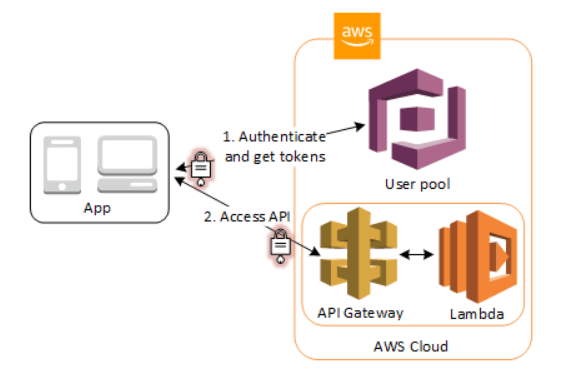Amazon Cognito is an Amazon Web Services (AWS) product that controls user authentication and access for mobile applications on internet-connected devices. An application developer can concentrate on writing code rather than creating and maintaining the back-end infrastructure because the service saves and synchronizes end-user data. This could hasten the creation of mobile applications.
It is necessary to verify two things in order to control access via authentication and authorization: the user’s identity and their authorization to use the device or website. In order for enterprises to keep their networks and protected resources safe from malicious users, both factors are essential. Where Amazon Cognito comes in is at this point.
A mobile application or website employs user pools, directories created by Amazon Cognito, to configure restricted access to AWS services. Client access platforms, devices, and operating systems accept end-user data from an identity pool to organize federated identity groups.
When a device is online, data synchronizes with Amazon, enabling an end user to access the same data on a different device. While disconnected, data can also be saved locally to an SQLite database before reconnecting. Data sets are linked to identities via Amazon Cognito, and encrypted data is saved as key or value pairs in the Amazon Cognito Sync store. A total of 20 MB can be saved by each user, with each data set having a maximum size of 1 MB.
As data updates and synchronizes, a developer can set up Amazon Cognito to accept streams of events. Other AWS cloud services, such as an Amazon Redshift database, Relational Database Service (RDS) instance, or an Amazon Simple Storage Service (S3) file, can also be used by mobile developers to query data.
What is the purpose of Amazon Cognito?
For web and mobile apps, Amazon Cognito delivers quick, secure user authentication, authorization, and administration. A user or visitor to Cognito can log in using their Amazon login and password or a username and password from a different website, such as Facebook, Google, or Apple.
As a result, a developer can:
With its built-in user interface (UI) and simple settings, developers can quickly add user sign-up, sign-in, and access control to their apps.
Federated identities from suppliers of social identity Sync data between several devices and programs. By creating roles and assigning users to them, developers may provide their app users safe access to other Amazon services.

Developers may concentrate on building applications and websites since Cognito handles all authentication needs. This might shorten the release cycle, speed up time to market, and increase time to value. It could also speed up the development process.
The ecosystem of Amazon Web Services (AWS) includes Cognito. An organization’s Amazon Management Console includes the Cognito console itself, where they may view all details regarding their Cognito account and payment.
The distinctions between identity pools and user pools
Amazon Cognito’s two primary parts are:
- User pools: User directories that allow app users to sign up and in.
- Identity pools: Users have access to additional AWS services thanks to Cognito elements (e.g., Amazon S3 and DynamoDB).
With a user pool, users can log in to an app using SAML identity providers, social identity providers (like Google or Facebook), or Amazon Cognito. Each user will have a profile in the directory. These profiles are accessible to developers via a software development kit (SDK). For added security, user pools can do credential checks, enable email- and phone-based verification, and support multi-factor authentication (MFA). AWS Lambda and Amazon Cognito Identity can be combined by an administrator to add logic for customizable security features.
A company can set up an identity pool if it needs to grant users access to AWS resources. In federated identities known as identity pools, authentication is supported through user pools, federated identity providers, SAML identity providers, and even unauthenticated identities (guest users). Organizations can establish distinct identities and allocate user permissions using identity pools.
StudySection gives an opportunity to beginners and experts in .NET framework to go through StudySection’s .NET certification exam and get a .NET certification for enhancement of career in programming. If you have knowledge of the .NET framework then you can get a certificate through an online exam at StudySection.




